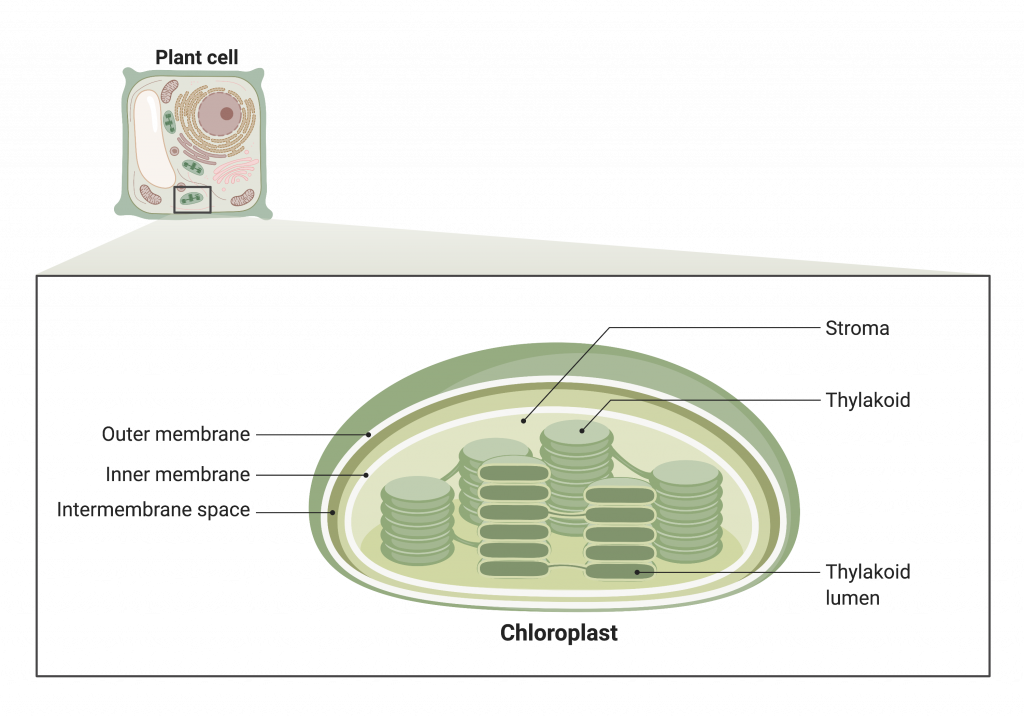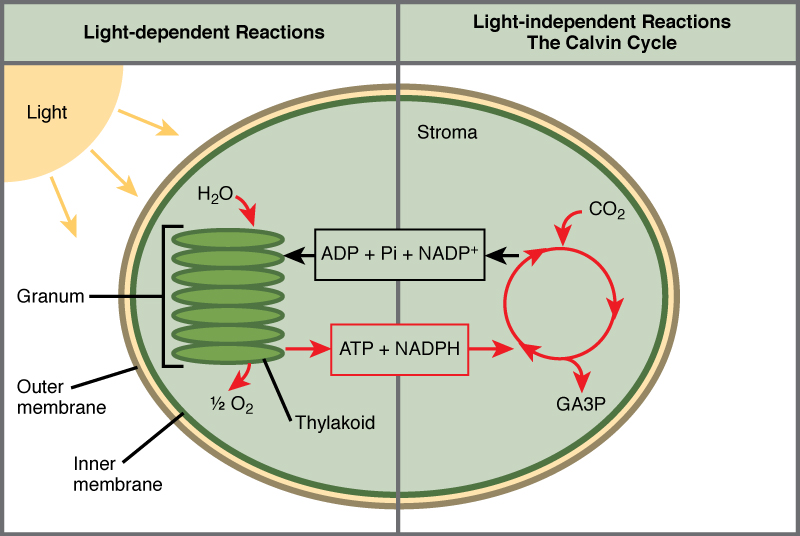24.1 Overview of Photosynthesis
Photosynthesis is essential to all life on earth; both plants and animals depend on it. It is the only biological process that can capture energy that originates from sunlight and convert it into chemical compounds (carbohydrates) that every organism uses to power its metabolism. It is also a source of oxygen necessary for many living organisms. In brief, the energy of sunlight is “captured” to energize electrons, whose energy is then stored in the covalent bonds of sugar molecules. How long lasting and stable are those covalent bonds? The energy extracted today by the burning of coal and petroleum products represents sunlight energy captured and stored by photosynthesis 350 to 200 million years ago during the Carboniferous Period.
The importance of photosynthesis is not just that it can capture sunlight’s energy. Photosynthesis is vital because it evolved as a way to store the energy from solar radiation (the “photo-” part) to energy in the carbon-carbon bonds of carbohydrate molecules (the “-synthesis” part). Those carbohydrates are the energy source that both autotrophs and heterotrophs use to power the synthesis of ATP via respiration. Therefore, photosynthesis powers 99 percent of Earth’s ecosystems.
The following is the chemical equation for photosynthesis:

Photosynthetic Structures
In plants, photosynthesis generally takes place in leaves, which consist of several layers of cells. The process of photosynthesis occurs in a middle layer called the mesophyll. The gas exchange of carbon dioxide and oxygen occurs through small, regulated openings called stomata (singular: stoma), which also play roles in the regulation of gas exchange and water balance. The stomata are typically located on the underside of the leaf, which helps to minimize water loss due to high temperatures on the upper surface of the leaf. Each stoma is flanked by guard cells that regulate the opening and closing of the stomata by swelling or shrinking in response to osmotic changes.
In all autotrophic eukaryotes, photosynthesis takes place inside an organelle called a chloroplast. For plants, chloroplast-containing cells exist mostly in the mesophyll. Chloroplasts have a double membrane envelope (composed of an outer membrane and an inner membrane), and are ancestrally derived from ancient free-living cyanobacteria. Within the chloroplast are stacked, disc-shaped structures called thylakoids. Embedded in the thylakoid membrane is chlorophyll, a pigment (molecule that absorbs light) responsible for the initial interaction between light and plant material, and numerous proteins that make up the electron transport chain. The thylakoid membrane encloses an internal space called the thylakoid lumen. The fluid-filled space inside the chloroplast but outside of the thylakoids is called the stroma.

The Two Parts of Photosynthesis
Photosynthesis takes place in two stages: the light-dependent reactions and the light-independent reactions. In the light-dependent reactions, energy from sunlight is absorbed by chlorophyll and other pigment molecules and that energy is converted into stored chemical energy. In the light-independent reactions, the chemical energy harvested during the light-dependent reactions drives the assembly of sugar molecules from carbon dioxide. Therefore, although the light-independent reactions do not use light directly, they require the products of the light-dependent reactions to function.
The light-dependent reactions utilize ATP and NADPH to temporarily store the energy: These are referred to as energy carriers. The energy carriers that move energy from light-dependent reactions to light-independent reactions can be thought of as “full” because they are rich in energy. After the energy is released, the “empty” energy carriers return to the light-dependent reaction to obtain more energy.

process of converting light energy into chemical energy
an organism that obtains carbon from inorganic molecules, such as carbon dioxide
an organism that obtains its carbon from organic molecules
middle layer of chlorophyll-rich cells in a leaf
opening that regulates gas exchange and water evaporation between leaves and the environment, typically situated on the underside of leaves
organelle in which photosynthesis takes place
thylakoid
disc-shaped, membrane-bound structure inside a chloroplast where the light-dependent reactions of photosynthesis take place
membrane around the thylakoids, which are found within chloroplasts
the fluid-filled space within the thylakoid membrane
the fluid-filled space inside a chloroplast but outside of the thylakoids
first stage of photosynthesis where certain wavelengths of the visible light are absorbed to form two energy-carrying molecules (ATP and NADPH)
second stage of photosynthesis, through which carbon dioxide is used to build carbohydrate molecules using energy from ATP and NADPH

